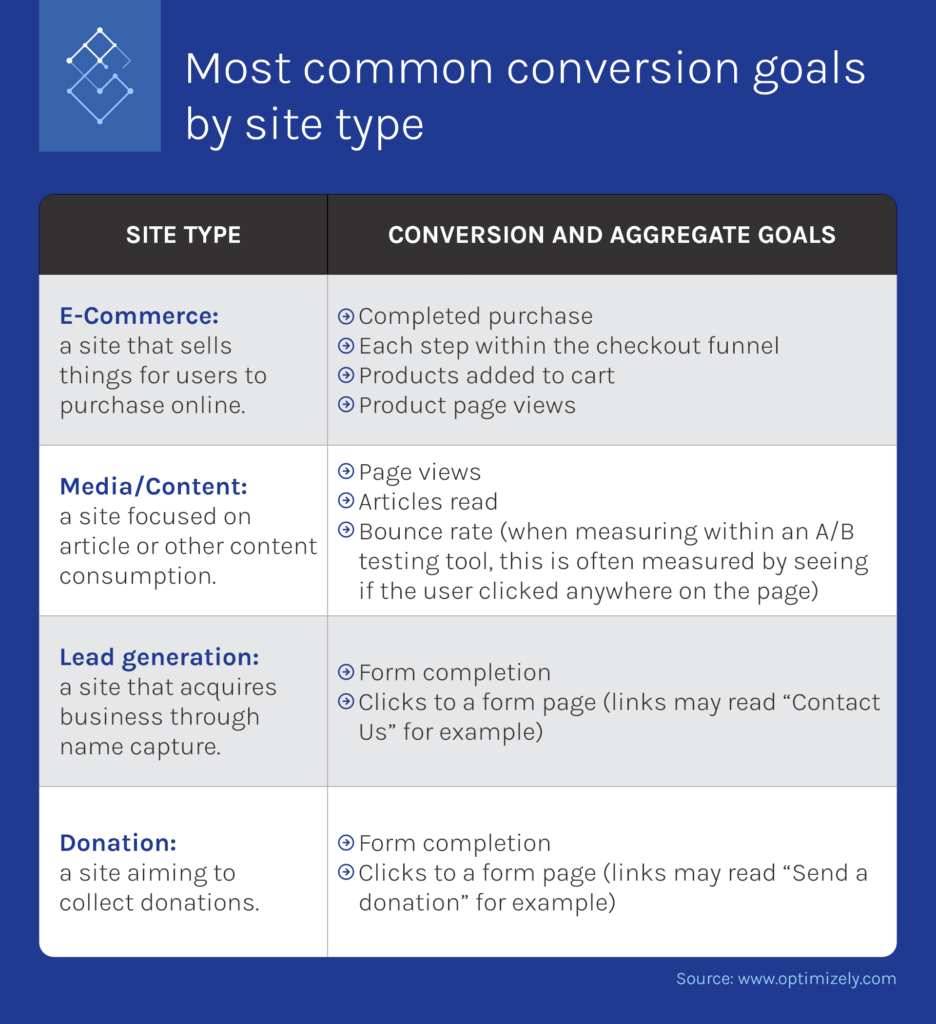Even companies with a robust digital presence can fall behind in that crucial last step: converting. Just doing SEO and running ads may be attracting visitors but if no one gets their foot in the door, what’s the point? That’s where CRO marketing processes come in and make the difference. Let’s help you get your eCommerce store to the next level.
Conversion rate optimization is the backbone of digital business. In this article, we’ll go over the various tools, processes, and stats that can help you set your sights on better audience conversion.
But first: if you’re looking for conversion rate optimisation services, we might fit the bill. We’ve helped dozens of clients in terms of achieving effective conversions and building their online presence. We’re ready to help you no matter what industry you’re in. Check out our services to learn more or click the button below to explore our offerings.
CRO Marketing Basics
CRO in digital marketing is the act of creating effective conversions i.e., driving visitors to complete an action. This action can be anything from a sale to a sign-up to whatever goals most matter to you. Building a good CRO process requires understanding what people want and communicating what you can give them. Sounds simple, but it really isn’t.
The fact is, the Internet is crowded with stores and sticking out requires every trick in the book. Conversions are not same as clicks. You could be getting an inordinate amount of attention but, if your end goal is sales, it won’t be a conversion. That’s why the most basic element of CRO is defining your parameters.
Set your goals in accordance with what your business needs. Here are some of the most common conversion goals:

If your goal is sales and you’re getting only clicks, you need to work on your CRO focus. If you want to improve device-based stats, optimise for mobile or for tablet or PC in particular. It all depends on your end-goal. CRO onpage stats that matter include:
- CTR (clickthrough rate) is great for engagement
- Bounce Rate and exit rate to dive deeper into your engagement stats
- Purchases for sales-based CRO marketing goals
- Sign-ups and customer retention in case you want to measure long-term engagement and interest
- Measure response rates, conversion rates, lifetime value, opt-in rates, unsubscribe rates, and cost per lead to check for further loyalty checks
eCommerce CRO Marketing Tips
The average Shopify conversion rate is 2.5% to 3%, so anything above that should be ok. While this varies from industry to industry, it’s a decent rule of thumb. 98 out of 100 Shopify clicks usually don’t convert. Here are a few strategies that can help you do better with Shopify or even your own sales portals.
- A/B test your landing pages or sales portals and find the phrases that operate the best according to customer experience optimization. Shopify has a whole guide about how to do this
- As with any sales process, keep the number of clicks between access to the page and the end conversion to a minimum.
- Use long-tail keywords to attract more specific niches within the target market. If you’re selling shoes, create a specific page for “best sneakers for running”. This specificity helps you get more fruitful commercial keywords
- Simplify your design to streamline sales. Your website might be turning off potential customers due to inefficiencies such as bad CTAs, sales buttons too far down the page or relatively hard to spot, bad descriptions for products, etc.
- Frequently check your page speed to make sure it’s not causing bounce rate issues (check out our guide on bounce rate optimisation to understand how to do this)
- Add testimonials, socials, and as much social proof as you can show potential customers
How to do an eCommerce CRO audit
For any conversion rate optimization strategy, you need to do an extensive eCommerce CRO audit. Here’s what that has to involve:
- Begin by choosing the conversion actions to audit, starting with a focus on purchase conversions
- Prioritize the pages to audit, with emphasis on the homepage, collection pages, and product pages
- Analyze user behavior using tools like Google Analytics and heat mapping software
- Collect direct feedback from customers through surveys and interviews
- Address quick wins such as fixing bugs, improving loading times, and streamlining the checkout process
- Formulate hypotheses for further conversion optimization based on data and customer feedback
- Implement A/B tests to validate hypotheses one at a time and make data-driven improvements
CRO SEO Tips

It’s established knowledge that most clicks to websites begin with search engines. Crucial sales CRO keywords usually reside within the commercial keywords section but these aren’t the only ones you should be focusing on. Most consumers begin their search for a service or product by seeking out information and looking up terms based on informational keywords. This means that you need to put your name out there in the early stages of the purchase funnel.
Boosting your level of clicks through content does not automatically mean you will convert. CRO often goes hand-in-hand with Click-through rate (CTR) optimization, which is part of the former but not the same thing. CTR leads more visitors to your page but CRO is the act of having them engage with an offering or other action.
Here are some simple things you can do to help the process while optimizing your website:
- Add text-based CTAs that turn information-seeking into product interest (kind of like we did in the opening of this article)
- Add messages to high-converting pages that drive up user engagement and interest
- Engage in link-building campaigns with similar sites and add external links to their work with specific keywords you want to keep ranking for
- Update the information on your pages, particularly if you are in an industry with rapid price changes
- Employ longtail keywords (as mentioned earlier)
Creating Nurture Flows For Conversion & Automation

Helping to create long-term conversions with nurture flows can supercharge your conversion funnels. These processes help to establish constant communication with prospects, be the first source on their minds when they reach the decision stage, and build more robust customer relationships. This involves employing the right marketing automation tools to streamline the process and ensure the campaign is relevant to the buying cycle.
As prospects engage, the nurture plan shifts towards more frequent communication, emphasizing product benefits and personal interactions. This approach helps segment the audience and ensures the right messages are delivered, avoiding annoyance or lost sales. Nurtured leads often make larger purchases due to increased trust. Once converted, they continue to receive retention-focused communications.
Nurture marketing also serves as a platform for conversational engagement, addressing challenges, concerns, and opportunities to prevent issues from escalating. Here’s how you can automate the process:
- Segment Your Target Audience: Proper lead segmentation is crucial for creating and delivering targeted emails. Create detailed buyer personas based on demographic factors, events, buyer’s stage, and leads’ online behavior.
- Set-Up Lead Scoring and Qualification System: This process aligns marketing and sales efforts, improves efficiency, enhances alignment, boosts conversion rates, and enables data-driven decision-making.
- Create Landing Pages: Automation systems often provide tools for creating and customizing landing pages.
- Be Content-Ready: You’ll need different types of content for the different stages of the customer journey. Early stages rely on informational content while later stages do commercial.
- Consider Marketing Automation Workflow Templates: Establishing efficient workflows is important for lead nurturing. Workflow templates streamline lead management, ensure consistency, and save time.
- Market Across Channels: Utilizing different channels can expand your reach, improve response rates, enhance personalization, increase brand visibility, provide a comprehensive customer experience, and create optimal conversion opportunities.
- Test Everything: Testing is essential to avoid errors and ensure a seamless experience for leads. A/B testing, clarity and simplicity checks, user experience testing, feedback solicitation, and continuous monitoring are important testing practices.
CRO Marketing Stats For Media Platforms
The average conversion rate across industries is about 2.3%. This can vary based on market sectors so it’s hard to state a one-size-fits-all statistic to use as a benchmark. Your own personal performance and improving on it is often more important than external benchmarking. Keep an eye on your stats before focusing on others far higher up the totem pole.
One thing that’s for sure is that more and more people are using smartphones to buy products and research companies ( mobile commerce eaualled $3.56 trillion in 2021). That’s why optimising your website for mobile and tablet is a crucial task. Make sure all your text fits on a mobile screen and you’re making clicking through your website as mobile-friendly as possible.
The average video streaming CTR, and particularly, Youtube click-through rate is difficult to calculate since it’s a platform with all sorts of content. Any good CTR stat should take into account your channel and similar channel averages based on genre. Your lead conversion rate will probably be less than 3% to 5% of your viewership.
The average TikTok conversion rate is about 1.1% for ads, which is really low. A good conversion rate on Etsy is above 3%, since the average Etsy conversion rate is 1% to 3%. While these rates may seem similar, you may want to assess your industry niche before deciding which one. More general products will do well on TikTok but, since it has a very wide audience, your conversion rate will depend on the mass appeal factor of your products.
Conversely, on Etsy, more niche products with a defined target group can perform better. Many people already use Etsy as a platform for getting shopping ideas. A bit more funnel-conscious marketing could tip them over to your CRO pipeline. Homewares/home furnishings, jewelry, and clothing items are the biggest sellers on the platform.
Best CRO Marketing Tools
CRO web analytics comes in many forms since a conversion can be a whole host of things. There are a plethora of CRO testing programs that you can incorporate into your CRO marketing processes. Let’s go over some of the best ones and their applications in your CRO workflow.
For monitoring conversion rates, Google Analytics can be a great go-to tool, especially with the goal-setting function. On the other hand, Shopify has some handy CRO tools in its arsenal. If your goal is awareness or CTR optimization, SEMrush and Ahrefs are viable alongside Google suite. Email marketing? Mailchimp. I could go on and on.
There are a multitude of tools out there that can help you make the most of your CRO objectives. As always, goals, come first. Based on those goals, set your tools in order.
However, if you’re looking to get some CRO processes going for your business, it might be handy to hire an external agency. With more complex jobs, this can be the way to go and it saves your time so you can focus on other pressing matters. Why not check out our services and see if we fit the bill.


